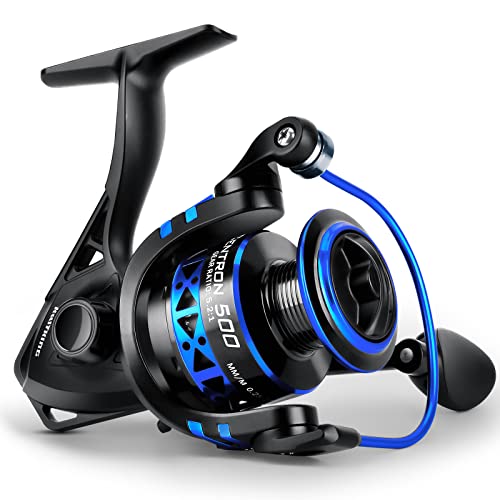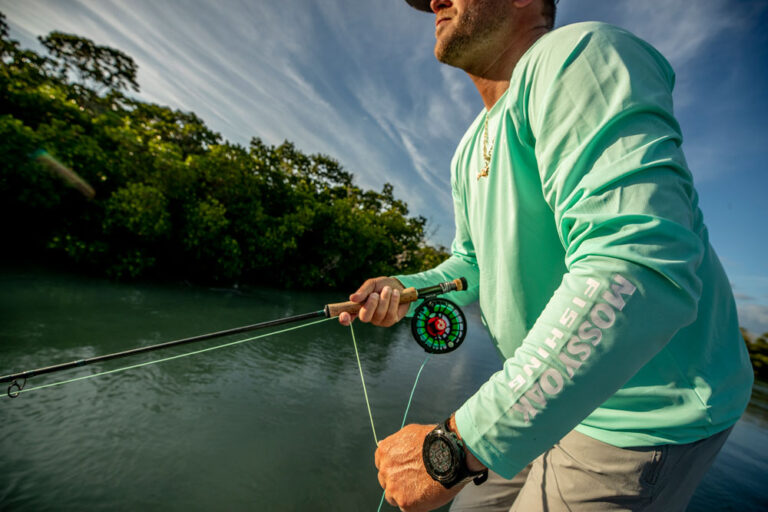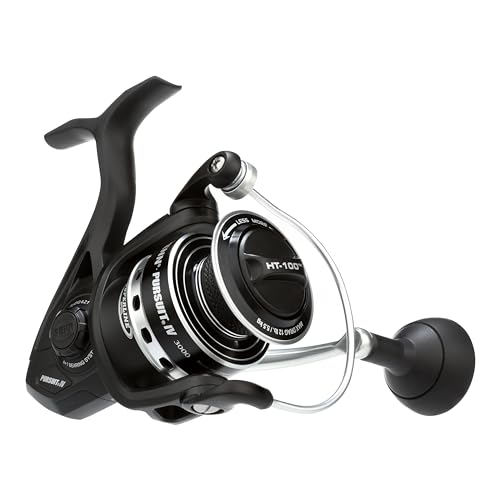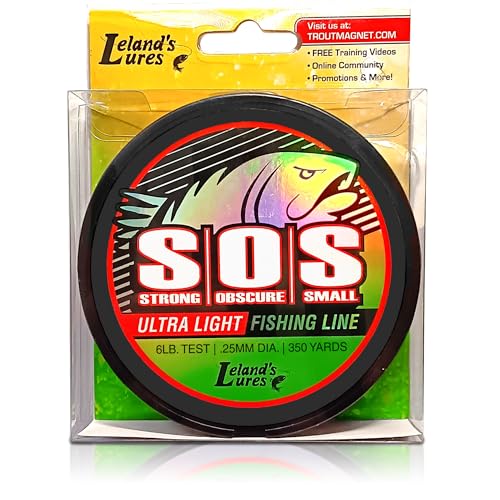The ideal barometric pressure for crappie fishing is between 29.70 and 30.40 inches. When the pressure remains relatively stable, it can improve the feeding activity of crappie and increase their chances of biting.
This is because stable barometric pressure can signal favorable weather conditions, which in turn can create a more active and productive fishing environment for crappie. Additionally, changes in barometric pressure can affect the depth at which crappie prefer to feed, with lower pressure often pushing them deeper and higher pressure bringing them closer to the surface.
By understanding the relationship between barometric pressure and crappie behavior, anglers can enhance their chances of success in catching these popular game fish.
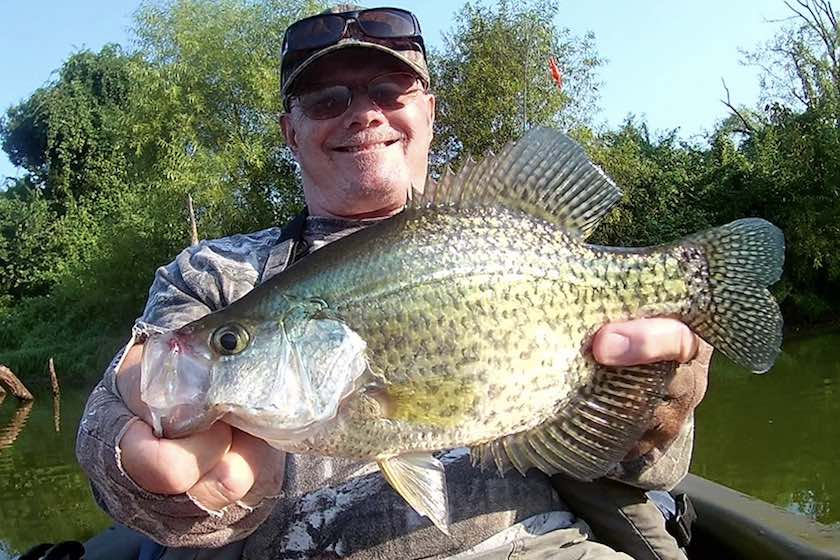
Credit: www.gameandfishmag.com
Understanding Barometric Pressure And Its Impact On Crappie Fishing
Barometric pressure plays a crucial role in determining the success of your crappie fishing trips. Understanding this atmospheric pressure and its impact on crappie behavior can greatly improve your chances of reeling in a fantastic catch. In this section, we will delve into the connection between barometric pressure and crappie fishing, exploring key factors that influence barometric pressure and how it fluctuates.
What Is Barometric Pressure And How Does It Affect Crappie Fishing?
- Barometric pressure, also known as atmospheric pressure, refers to the weight of the air pushing down on the earth’s surface.
- Changes in barometric pressure can influence the behavior of crappie, causing them to become more or less active.
- When atmospheric pressure is stable, crappie tend to be more active and willing to bite. On the other hand, when there are significant changes in barometric pressure, such as a rapid increase or decrease, crappie may become less active and more difficult to catch.
Exploring The Connection Between Barometric Pressure And Fish Behavior
- Crappie have an ability to sense changes in barometric pressure and adjust their behavior accordingly.
- When the barometric pressure is low or falling, crappie may move to deeper waters or become more sluggish.
- Conversely, when the barometric pressure is high or rising, crappie tend to move towards shallower waters and become more active, making them more likely to bite.
Factors That Influence Barometric Pressure And How It Fluctuates
- Weather systems: High and low-pressure systems, associated with weather fronts, can greatly affect barometric pressure. A passing cold front, for example, often brings falling barometric pressure, while a high-pressure system can indicate stable or rising pressure.
- Altitude: Barometric pressure decreases with increased altitude. If you’re fishing at higher elevations, keep in mind that the pressure may be lower compared to fishing at sea level.
- Time of day: Barometric pressure can also fluctuate throughout the day. It is generally observed that crappie fishing tends to be more productive when the barometric pressure is stable or rising, regardless of the actual pressure reading.
Understanding the connection between barometric pressure and crappie fishing can provide valuable insights to help you plan your fishing trips more effectively. By considering the factors that influence barometric pressure and learning how to adjust your fishing techniques accordingly, you can increase your chances of a successful crappie fishing adventure.
So, keep an eye on the barometer and get ready to reel in those crappie!
The Relationship Between Barometric Pressure And Crappie Feeding Patterns
When it comes to crappie fishing, understanding the relationship between barometric pressure and crappie feeding patterns can greatly enhance your chances of success. Crappie, known for their elusive and finicky nature, are highly sensitive to changes in their environment. Barometric pressure, in particular, plays a significant role in their behavior and feeding habits.
By learning how to adjust your fishing strategy based on barometric pressure readings, you can increase your chances of reeling in a plentiful catch.
How Crappie Feeding Patterns Are Influenced By Barometric Pressure Changes
- High barometric pressure: Crappie tend to become less active during periods of high barometric pressure. The increased pressure has a compressing effect on their swim bladder, causing discomfort and making it more difficult for them to swim and feed. During these times, crappie are likely to be found in deeper waters, away from the shallows.
- Low barometric pressure: Conversely, crappie tend to be more active and eager to feed when the barometric pressure is low. As the pressure drops, their swim bladders expand, allowing them to move more freely and actively pursue their prey. This is often an opportune time to target crappie in shallower waters, as they are more likely to be actively feeding.
Understanding The Ideal Barometric Pressure For Crappie Fishing Success
- Optimal barometric pressure range: Crappie fishing tends to be most successful when the barometric pressure is steady or slowly rising. This indicates stable weather conditions, which crappie prefer. Ideally, a range between 29.70 and 30.30 inches of mercury is considered favorable for crappie fishing. It’s important to monitor barometric pressure trends leading up to your fishing trip to determine the most optimal fishing times.
- Weather fronts and feeding activity: Crappie feeding can also be influenced by weather fronts. As a weather front approaches, the barometric pressure can fluctuate significantly, impacting crappie behavior. Just before a front arrives, crappie may increase their feeding activity, sensing the impending change in weather conditions. It can be worthwhile to plan your fishing trips around these periods of increased feeding.
Tips For Adjusting Your Fishing Strategy Based On Barometric Pressure Readings
- High pressure techniques: When fishing under high barometric pressure, consider using slow and subtle techniques to entice crappie bites. This may involve using smaller bait, such as minnows or small jigs, and adopting a slow retrieval speed. Targeting deeper structures and drop-offs can also yield better results during these periods.
- Low pressure techniques: In contrast, during low barometric pressure, crappie are more likely to be actively feeding and more responsive to aggressive bait presentations. Using larger bait, such as larger jigs or crankbaits, and employing a faster retrieval speed can help attract their attention. Focus on shallower areas, such as brush piles or vegetation, where crappie tend to congregate during these times.
By understanding the relationship between barometric pressure and crappie feeding patterns, as well as adapting your fishing strategy accordingly, you can significantly enhance your chances of a successful crappie fishing trip. Keep a close eye on barometric pressure readings and weather conditions, and be prepared to adjust your techniques to maximize your chances of landing a prized crappie catch.
Happy fishing!
Crappie Fishing Techniques For Different Barometric Pressure Conditions
Barometric pressure plays a crucial role in determining the success of your crappie fishing expedition. Understanding how different barometric pressure conditions affect crappie behavior can give you an edge and increase your chances of reeling in a great catch. In this section, we will discuss effective crappie fishing techniques for high barometric pressure, low barometric pressure, and changing barometric pressure conditions.
High Barometric Pressure: Strategies For Targeting Crappie In These Conditions
When the barometric pressure is high, crappie tend to become less active and retreat to deeper waters. However, with the right strategies, you can still entice them to bite. Here are some techniques to consider:
- Slow down your presentation: Crappie become lethargic in high-pressure conditions, so it’s important to slow down your lure or bait presentation. An easy way to achieve this is by reducing your retrieval speed or using a lighter jig.
- Downsize your bait: Switching to smaller bait options, such as tiny jigs or live minnows, can entice crappie even in sluggish conditions.
- Focus on deeper structures: As crappie move to deeper waters during high pressure, target structures like brush piles, drop-offs, and submerged trees. These areas provide cover and attract crappie seeking shelter.
- Experiment with depth: Crappie can be found at varying depths during high pressure. Try fishing at different depths to find where they are congregating.
Low Barometric Pressure: Tips For Capitalizing On Crappie Feeding Frenzies
Low barometric pressure, typically associated with approaching storms and cloudy conditions, can trigger crappie feeding frenzies. To take advantage of this feeding behavior, consider the following tips:
- Go shallow: Crappie tend to move towards shallower waters during low-pressure systems. Focus your fishing efforts near weed beds, rocky banks, and submerged structures close to the shore.
- Increase retrieval speed: During feeding frenzies, crappie exhibit more aggressive behavior. Speeding up your presentation, whether using a jig or a crankbait, can trigger a reaction bite.
- Opt for bright-colored lures: In murky water conditions caused by low pressure, crappie have reduced visibility. Using brightly colored lures can make your bait more visible and attract their attention.
- Use noise and vibration: Switch to lures with built-in rattles or add noise-making accessories to your setup. The vibrations and sound produced can help crappie locate your bait more easily.
Changing Barometric Pressure: Techniques For Adapting To Fluctuating Conditions
Barometric pressure doesn’t always remain constant. It fluctuates throughout the day, and crappie adjust their behavior accordingly. Adapting to changing pressure conditions is essential for successful fishing. Consider these techniques:
- Stay updated on weather forecasts: Monitoring weather forecasts will give you insight into how barometric pressure might change. Use this information to plan your fishing trips and adjust your techniques accordingly.
- Pay attention to fish behavior: Observing crappie behavior on the water can provide valuable clues about the influence of changing barometric pressure. If they suddenly become more active or start feeding aggressively, it may indicate a pressure change.
- Try a variety of lures and presentations: Changing conditions call for experimentation. If your usual techniques aren’t working, try different lure colors, sizes, or retrieval speeds to see what triggers a response from the crappie.
- Stay patient and persistent: Fluctuating barometric pressure can make crappie unpredictable. Be patient, stay focused, and adapt your approach until you find what works.
By understanding the impact of barometric pressure on crappie behavior and employing the appropriate techniques, you can enhance your crappie fishing success and reel in more of these prized freshwater game fish. So, the next time you head out to the water, don’t overlook the importance of barometric pressure and let it work to your advantage.
Conclusion
To optimize your crappie fishing experience, understanding the best barometric pressure is essential. While there isn’t one magic number that guarantees success, there are general patterns you can follow. First, consider that crappies are most active when barometric pressure is stable or slightly falling.
This indicates stable weather conditions, which crappie tend to prefer. However, some anglers have also found success during low-pressure systems, mainly because crappies tend to seek shelter and feed during these times. On the other hand, high-pressure systems usually result in slower fishing as crappie become less active and more cautious.
When planning your fishing trips, keep an eye on the barometric pressure trends in your area, and use this information to your advantage. Monitoring weather changes and adjusting your strategies accordingly can significantly improve your chances of a successful crappie fishing outing.
So, get out there and apply these tips to maximize your catches!

